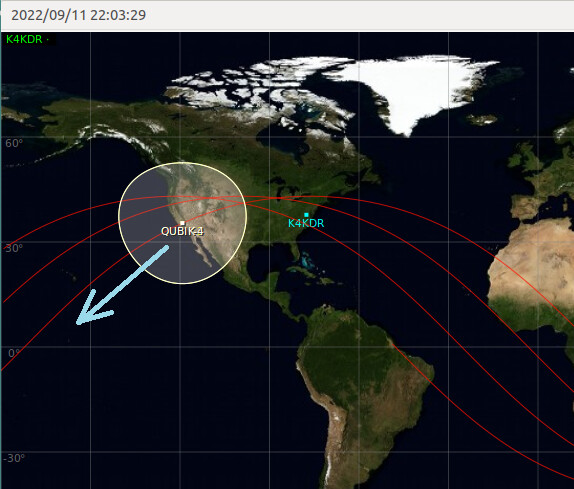Hi everyone,
Firefly Alpha 2 Launch is scheduled for tomorrow: FLTA002 -To The Black - Firefly Aerospace
The Alpha 1 launch attempt a year ago failed, but I believe all the payloads have been rebuilt and will fly again tomorrow. The spacecraft seem to be in the database, but they show as “re-entered”.
For the Teachers In Space Serenity CubeSat, the transmitter is now AFSK9k6 instead of AFSK4k8. I’ve done some testing with their engineering model but I haven’t successfully decoded any packet so far so I can’t confirm this 100%
73,
Alan
KU2Y
From this announcement:
Mission Summary
Alpha Flight 2: To The Black is Firefly’s second technology demonstration flight that will attempt to launch multiple satellites to low Earth orbit (LEO) from our launch site (SLC-2) at Vandenberg Space Force Base. Alpha will first insert into an elliptical transfer orbit, coast to apogee, and perform a circularization burn.
Timing: Launch window opens on September 11th, 2022, at 3:00 PM PST
Location: Firefly SLC-2, Vandenberg Space Force Base, CA
Altitude: 300 km
Inclination: 137 deg
Satellite Payloads
Teachers in Space — Serenity
- Class: 3U CubeSat
- Dimensions: 32cm x 10cm x 10cm
- Mass: 1.67Kg
Mission: To collect flight data during the mission and make it available to the educational community for analysis and comparison to data collected on other flights and vehicles.
Typical data collected: Atmospheric pressure, Temperature, and Radiation via a matched pair of Geiger counters, one wrapped in experimental radiation protection material, one unwrapped
[NASA TechEdSat-15](
- Class: 3U CubeSat
- Dimensions: 10cm x 10cm x 34cm
- Mass: 4.15kg
Mission: The TechEdSat-15 is a three-unit CubeSat that weighs 9.1 pounds and carries experiments that are being advanced in TechEdSat’s Nano-Orbital Workshop (NOW) rapid flight development series.
TechEdSat-15’s primary experiment is a version of an exo-brake intended to survive much higher temperature environments – several hundred degrees – than in previous flights. It will demonstrate the next step forward in nanosatellites’ ability to target an Earth entry point.
The exo-brake is a device that applies drag in Earth’s exosphere – the uppermost reaches of the atmosphere – to slow the speed of a satellite’s descent and change its direction. This experiment will permit the satellite to survive closer-to-peak heating, maintain telemetry, and assess the dynamics as the system enters the top of the atmosphere.
Another experiment on TechEdSat-15 includes the Beacon And Memory Board Interface (BAMBI), which optimizes internal and external data transfer from the nanosatellite.
The TechEdSat-NOW series has multiple research goals including using the exo-brake to de-orbit high-altitude nanosatellites at end of mission to reduce issues related to orbital debris. Additionally, drag modulation has uses for sample return from low-Earth orbit as well as tailoring orbits during aero-pass maneuvers for future planetary applications.
Libre Space Foundation — PicoBus
- Class: PicoSat Deployer
- Dimensions: 37cm x 12cm x 15cm
- Mass: 6.327Kg (including dispenser)
Mission: An 8P Pocketqube deployer to be used to deploy 6 picosatellites into space and test the world’s first fully free and open source telecommunications constellation
GENESIS-L & GENESIS-N (AMSAT Spain). Objective: Technology demonstration for radio-amateurs, micro sub-joule pulsed plasma thruster & test platform to build heritage for future missions
FOSSASAT-1B. Objective: Communication & Remote sensing Technology Demonstrator of LoRa telecommunications, ADCS demonstration, & low-resolution earth imager experiment.
Qubik-1 & Qubik-2 (Libre Space). Objective: Communication Technology Demonstrator performing multiple telecommunication experiments

